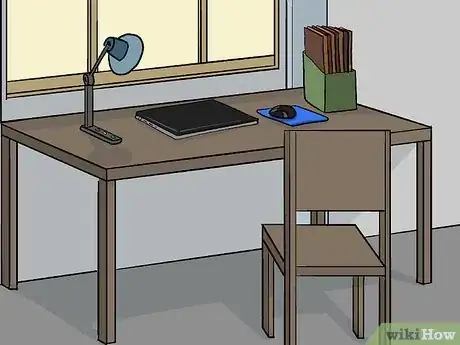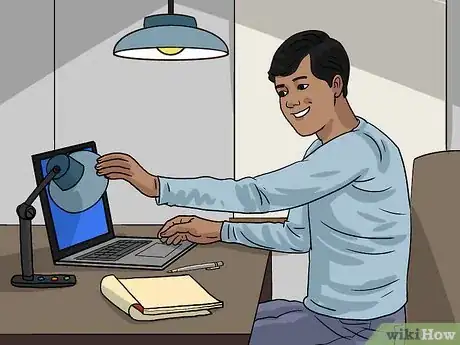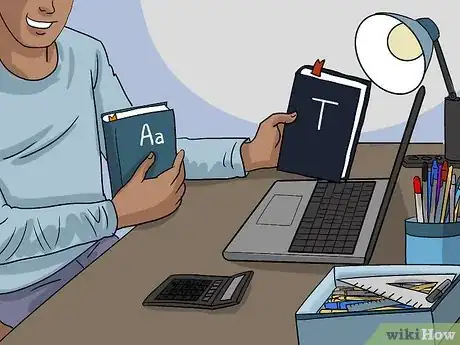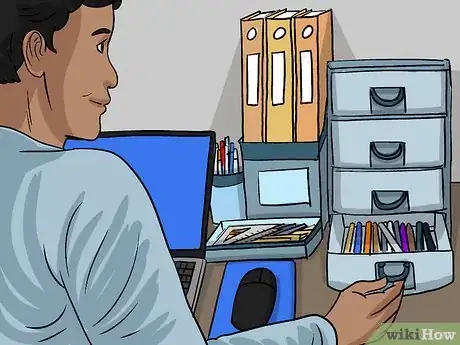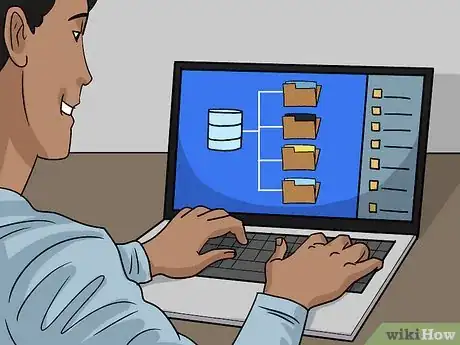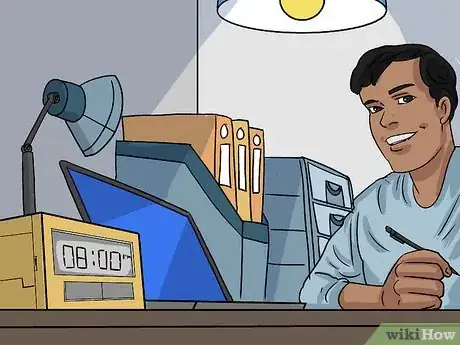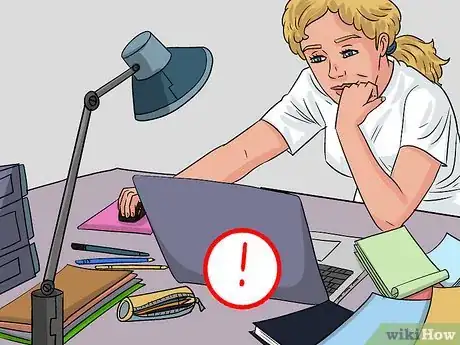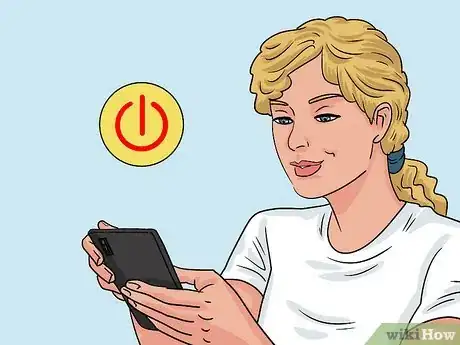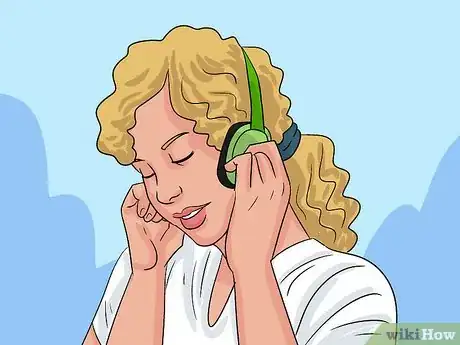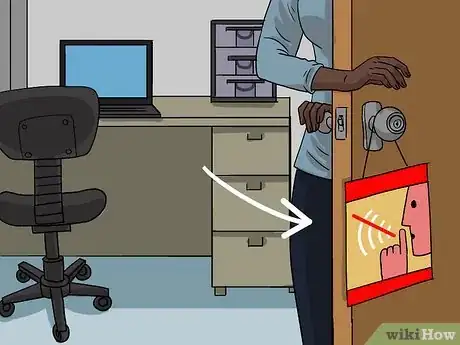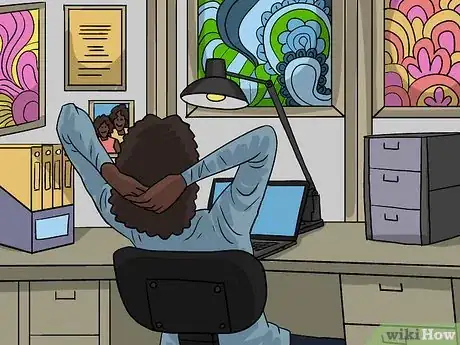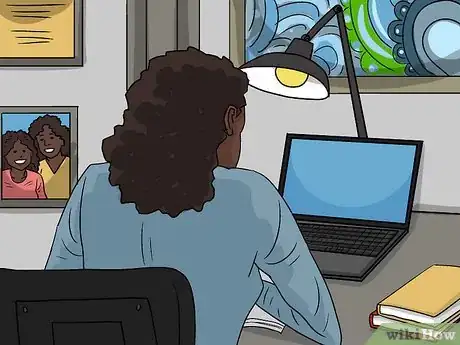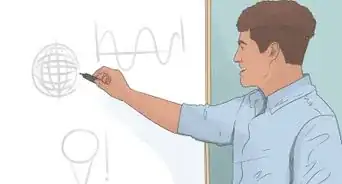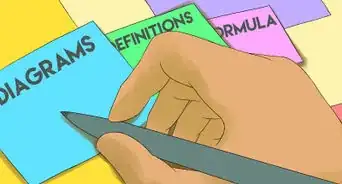This article was co-authored by Alexander Ruiz, M.Ed.. Alexander Ruiz is an Educational Consultant and the Educational Director of Link Educational Institute, a tutoring business based in Claremont, California that provides customizable educational plans, subject and test prep tutoring, and college application consulting. With over a decade and a half of experience in the education industry, Alexander coaches students to increase their self-awareness and emotional intelligence while achieving skills and the goal of achieving skills and higher education. He holds a BA in Psychology from Florida International University and an MA in Education from Georgia Southern University.
There are 21 references cited in this article, which can be found at the bottom of the page.
wikiHow marks an article as reader-approved once it receives enough positive feedback. This article received 33 testimonials and 85% of readers who voted found it helpful, earning it our reader-approved status.
This article has been viewed 573,101 times.
Do you have trouble studying? Do you doze off in bed when trying to learn about the Middle Ages, or get tied up with distractions around the dining room table when you’re supposed to be focusing on the periodic table? Finding a better study space may be your answer. With the right equipment, some planning and organization, and a personal touch, you can carve out a better studying oasis that might improve your results.
Steps
Stocking Your Space
-
1Find a good desk (or table) and chair. You want to be comfortable, but not so comfortable that you lose focus or fall asleep. (Your bed’s not the greatest option for homework, it turns out.)[1] You also need adequate workspace to spread out.
- Find a desk or table with a top that rests somewhere between your waist and ribcage when you sit at it, so that your elbows can rest easily upon it without having to hunch your shoulders forward. You also want to be able to rest your feet flat on the ground.[2]
- Use a comfortable chair that fits the height of the desk / table. You may want to skip the fancier desk chairs that rotate, roll, recline, lift, etc., if these will only become distractions.
- If you are using a computer, you want enough space to place it about 1 ½ to 2 ½ feet away from you.
-
2Ensure adequate lighting. A study area that is too dark will not only make it easier to nod off, it can exacerbate eye strain, which will put a damper on any study session. Harsh lighting, such as fluorescent light, can be bad for your eyes too. Use a desk lamp to focus light on your workspace, and also a nearby table or overhead light to brighten the area.[3] [4]
- If natural light is available, certainly make use of it. Be aware, though, that while the natural light provided by a window can be refreshing and calming, the temptation to stare out the window may hamper your studying. Consider draperies or translucent blinds, or face away from the window.
Advertisement -
3Gather your supplies. Make sure you have all the materials you need for studying close at hand, so you don’t waste time fumbling around for a ruler or pencil lead refills.
- Keep classic school supplies like pens or pencils, erasers, paper, notecards, highlighters, and so on in assigned areas on the desk or in a handy drawer.
- Keep a traditional pocket dictionary, thesaurus, and calculator nearby, even though your phone can probably do the jobs of all three. Using your phone to do long division or spell-check is an open invitation to distraction by the million other things you can do on it.[5]
-
4Keep things organized. Make use of the desk drawers to keep things you need close by but not spread out all over the desktop. If you don’t have enough (or any) drawers, use boxes, small crates, etc. that you can stack on the desktop along the perimeter of your study area.
- Organize your study materials by course / subject in folders or binders. Mark each clearly and store them for easy access.
- You can also organize assignments and notes by using bulletin boards, cork tiles, and wall calendars.
- For more ideas, see How to Organize Your Desk
-
5Organize your computer files, too. Being organized should extend to your online stuff as well as what’s physically around you. Have you ever looked for a draft of that essay you were writing only to be unable to find it? Or lost the notes you needed to study for your psychics test because you can’t remember where you saved them? Create specific folders for each class or subject, and keep all your files in the right place.[6]
- Label things clearly so you can use the search feature to find them. Skip cutesy names in favor of descriptive titles. And label drafts!
-
6Consider a clock. This depends on the type of person you are. Will a clock motivate you to keep studying for an hour more, or remind you that your favorite show is on in only 15 minutes (or make you think “I’ve only been studying for that long?!”)?[7]
- Try using a clock to set time-related study goals. You can also use the clock or timer feature on your phone or a watch to help you do this. Decide to study in a “chunk” of time, such as 30 minutes. Don’t allow yourself any distractions for that period of time. When it’s up, take a little break to reward yourself![8]
- You could also try out a timer for even more precise time-keeping, especially if you are preparing for a timed exam like the SAT or ACT.
- If the tick-tock of an old-fashioned clock bothers you, go digital.
Eliminating Distractions
-
1Reduce desk clutter. This ties in with the need for proper desk organization, but also means that you need to keep tabs on the mess of papers, pens, open books, and so on that may build up on your workspace as you study. Too much clutter can leave you feeling overwhelmed and stressed out, which will put a damper on your study session.[9]
- It is a good idea to take short study breaks along the way anyway, so when you do, take a moment to tidy up your workspace before resuming.
- Excess clutter can lead to unnecessary distractions. Keep only what you need at that time in front of you. A cluttered workspace can lead to a cluttered mind.
-
2Avoid your phone. It is hard to ignore the lure of your phone when studying. The modern smartphone is perhaps the ultimate tool and the ultimate distractor. Put it away when you study, or you may find yourself browsing Facebook or texting a friend without even realizing you’d picked up the phone.[10]
- Turn your phone off or put it in do-not-disturb so the lure of notification chimes doesn’t drag you away from your studies. Also try placing it well out of reach so you can’t reflexively grab for it.[11]
- If you are using your phone as a calculator or other tool, consider putting it on airplane mode which shuts off wireless and cellular connections. You can turn them back on for your (brief) study breaks.
-
3Block out distracting sounds. Some people do well with “white noise,” background noises such as those in a coffee shop that aren’t really distinct enough to be distracting. Others need total silence to work. Figure out what works well for you, and plan your space accordingly.[12]
- ”Multitasking” is a myth. You simply can’t watch TV or surf Facebook and study at the same time, no matter how much you think you’re “really” a multitasker.[13] Focus your study time on studying, and save things like TV and music for leisure time.
- If your study space shares a room or a thin wall with a TV in use by someone, or people engaged in conversation or some other potential distraction, try to block out the distraction with your own background noise.
- Try choosing something like rain sounds or white noise; there are websites and apps with samples of these. If you prefer music, try light classical or at least something without lyrics. You want something that negates audio distractions without becoming one itself.[14]
- Don’t use headphones if you have a choice. They seem to hinder focus and information retention for many people, probably because the sound does not as easily blend into the background.[15]
-
4Use the space only for studying. If your study space is your bed, you’ll be more tempted to think of (or actually) sleep. If it's where you play computer games, gaming; the dining room table, eating; and so on. You’ll be more likely to create distracting associations.[16]
- If it is possible for you to carve out a space -- even a corner, a niche, a large closet, etc. -- dedicated exclusively to studying, do it. Associate your presence there only with studying.
- If this is not an option, do what you can to transform the multipurpose space into study space. Clear away food, dishes, centerpieces, etc., from the dining room table. Put away your computer games, scrapbooking supplies, and so on.
-
5Avoid snacking while studying. Studying is hard, hungry work, but you need to be careful. It’s easy to nibble into oblivion when you’re hitting the books. Junk food in particular is a bad idea. If you have to have some snacks handy, choose fresh fruits, vegetables, or whole-grain snacks like crackers.
- Try to avoid over-consuming sugar and caffeine while studying. These can make you feel jittery and lead to “crashes” later.
- Try saving your snack for when you take a study break. You’ll be more aware of what you’re eating, and it’s a nice way to reward yourself for a job well done.
- Don’t ignore your body’s needs, though. Set yourself a meal or snack break, or give yourself a specific amount of time before you replenish your coffee. This way, you take care of your mind and your body.
Personalizing Your Study Space
-
1Make it yours. Try to locate your study space in an area that suits you. If you need dead silence, find a tucked away corner, an attic, a basement, a spare bedroom, whatever you can find. If you prefer some sound, locate it near (but not within) an area of more activity.
- If the location can’t always be your dedicated study space, let others know when it is being used as such. Go ahead and make a “Do Not Disturb,” “Quiet, please,” or “Hey, knock it off -- I’m studying here!” sign to post, depending on your personality.
-
2Decorate to motivate. Adorning your study space with posters, signs, and photos that are important to you may help give you that boost to keep going. Just make sure they don’t become distractions rather than motivators.[17]
- Figure out what kind of motivation works for you. A picture of your family or a beloved pet? A poster of the car you hope to get after you pass these exams and graduate? Copies of your earlier exams in chemistry with poor scores that you are determined to improve upon? Determine whether you need more of a “push” or a “pull” (or a carrot or stick, if you prefer) to keep you motivated.
- Decorating the space also identifies it as yours, even if only temporarily, as in the case of a dining room table or shared space. Bring along a few motivating mementos for your study time that can be easily packed up when you’re finished.
-
3Appeal to your senses. If you can add color to your study space, keep in mind that cool colors like blue, purple, and green tend to inspire feelings of peace and balance, while warmer colors like red, yellow, and orange tend to inspire activity and even restlessness.[18]
- So, if you tend to get overly anxious for upcoming exams, consider going with a cool color palate for your décor; if you need a kick in the pants while trying to study, go warmer.
- Don’t shortchange your other senses, though. Some scents, like lemon, lavender, jasmine, rosemary, cinnamon, and peppermint, seem to boost mood and productivity in some people. Try out different scented candles and essential oils.[19]
- While white noise, rain sounds, or classical music are generally the best choices for background sound during a study session, if you can’t bring yourself to choose such options, select music that is very familiar to you. Create a soundtrack with songs you’ve heard a million times before; these are more likely to fade into the background than a new hit that you just begs you to sing along.[20]
-
4Don't go overboard. Remember that the purpose of a study space is to help you study more effectively. If you spend too long trying to set up your space just so and end up significantly reducing your actual study time, you will be doing yourself a disservice. A study space meant to limit distractions can become a distraction itself.
- Remember: You're better off studying in a less-than-ideal space than not studying in a perfect space.
Community Q&A
-
QuestionWhat sorts of supplies do I need?
 Community AnswerThis will depend on what you are studying. You should, at the very least, have a pad of paper and some pens or pencils. If you are studying from a textbook, you might also want to have a highlighter. If you are studying math, then you might also want to have a calculator.
Community AnswerThis will depend on what you are studying. You should, at the very least, have a pad of paper and some pens or pencils. If you are studying from a textbook, you might also want to have a highlighter. If you are studying math, then you might also want to have a calculator. -
QuestionWhat things should be in my table in my study space?
 Community AnswerKeep only the items you absolutely need to study, like a pen, pencil, lamp and paper. Limit distractions by only keeping study supplies nearby.
Community AnswerKeep only the items you absolutely need to study, like a pen, pencil, lamp and paper. Limit distractions by only keeping study supplies nearby. -
QuestionWould a study nook help me focus when studying?
 Community AnswerMost likely. In a nook, you are tucked away from distractions and surrounded by study stuff, so it's a good environment for focusing on your academics.
Community AnswerMost likely. In a nook, you are tucked away from distractions and surrounded by study stuff, so it's a good environment for focusing on your academics.
References
- ↑ https://www.utep.edu/extendeduniversity/utepconnect/blog/april-2017/7-ways-to-organize-your-study-space-for-success.html
- ↑ https://www.physiomed.co.uk/uploads/guide/file/22/Physiomed_Sitting_Guide_-_Working_at_a_Desk_Digital.pdf
- ↑ https://www.niagaracollegetoronto.ca/blog/six-ways-to-create-your-ideal-study-space-at-home
- ↑ https://www.herzing.edu/blog/6-tips-create-perfect-study-environment
- ↑ https://kidshealth.org/en/parents/help-teen-homework.html
- ↑ https://www.data.cam.ac.uk/data-management-guide/organising-your-data
- ↑ https://www.cornerstone.edu/blog-post/6-ways-to-create-the-ultimate-study-spot/
- ↑ https://sites.rhodes.edu/academic-and-learning-resources/news/productivity-time-chunking-method
- ↑ https://usq.pressbooks.pub/academicsuccess/chapter/study-space/
- ↑ https://www.fnu.edu/7-techniques-improve-study-habits/
- ↑ https://www.oxfordlearning.com/study-without-getting-distracted-tips/
- ↑ https://learningcenter.unc.edu/tips-and-tools/take-charge-of-distractions/
- ↑ https://www.npr.org/2013/05/10/182861382/the-myth-of-multitasking
- ↑ https://www.psychologytoday.com/us/blog/memory-medic/201706/does-white-noise-help-you-learn-0
- ↑ https://liberalarts.tamu.edu/blog/2021/03/10/does-listening-to-music-really-help-you-study/
- ↑ https://www.educationcorner.com/study-motivation-tips.html
- ↑ https://acse.edu.au/blog/create-motivational-study-space-at-your-home/
- ↑ https://journals.sagepub.com/doi/full/10.1177/2158244014525423
- ↑ https://cognitiveresearchjournal.springeropen.com/articles/10.1186/s41235-020-00243-4
- ↑ https://www.topuniversities.com/blog/whats-best-music-studying
- ↑ Alexander Ruiz, M.Ed.. Educational Consultant. Expert Interview. 18 June 2020.
- ↑ Alexander Ruiz, M.Ed.. Educational Consultant. Expert Interview. 18 June 2020.
About This Article
To make a study space, start by setting yourself up with a sturdy desk or table, and a comfortable chair in a spot with good lighting. Then, stock your space with supplies you may need, like notecards and highlighters, and use folders or binders to organize your study materials. Try to keep your desk or table neat and tidy so you can focus on the work in front of you. Additionally, personalize your space with pictures, posters, or signs that motivate you, such as a picture of the car you hope to get when you graduate. For tips from our Academic co-author on how to avoid distractions when you study, keep reading!
